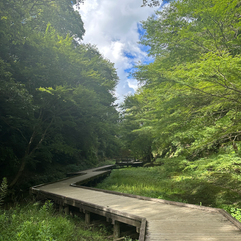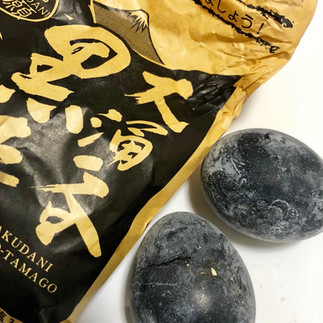Kanto region will be your first destination upon arriving in Japan. While you might recognize Tokyo, there are six other prefectures: Chiba, Kanagawa, Saitama, Gunma, Tochigi, and Ibaraki. This area serves as Japan's political and economic heart, offering a blend of the ultramodern and the traditional – from dazzling skyscrapers and anime shops in Tokyo to ancient shrines in Nikko.

Attractions:
Overview:
While most people think of skyscrapers when they hear "Tokyo," you will be surprise when you hear about Okutama. This place offers a different image of the city. Located in western Tokyo, this area is filled with nature, including mountains, rivers, and lakes.
Highlights:
Water Activities: Rafting and canoeing are popular on the Tama River.
Okutama Lake: A stunning man-made lake perfect for leisurely boat rides.
Mitake Mountain: Train yourself for 7+ trails. Its time to hiking next to the city.
Overview:
Hakone is one of Japan's most famous hot spring areas, offering panoramic views of Mt. Fuji, various forms of hot springs, and a rich history that includes stretches of the old Tokaido road – a path samurai once walked from Osaka to Tokyo.
Highlights:
Owakudani Valley: This volcanic valley offers striking views and the opportunity to try a unique treat: black sulfur eggs, said to extend one’s lifespan by seven years.
Lake Ashi (Ashinoko): Enjoy a ship cruise across this beautiful lake, which also provides one of the most iconic views of Mt. Fuji.
Hakone Shrine: Tucked away in a dense forest, this Shinto shrine offers a peaceful escape with a mystical atmosphere. Don't miss the iconic torii gate in the lake.
Hot Springs (Onsen): Being a volcanic area, Hakone is rich in hot springs, offering many onsen resorts from budget-friendly to ultra-luxurious.
Hakone Open-Air Museum: An art museum where you can appreciate sculptures and artworks in an open, natural setting.
Overview:
Nagatoro is popular for its scenic beauty and outdoor activities, particularly along the Arakawa River. It is located about two hours from Tokyo.
Highlights:
River Boating: Experience traditional boating down the Arakawa River, navigated by local boatmen.
Iwadatami Rocks: These unique rock formations alongside the Nagatoro River offer fantastic photo opportunities.
Chichibu Shrine: One of Japan's oldest shrines, known for its lovely gongen-zukuri architecture and striking wood carvings on its eaves.
Overview:
These are two of the most famous hot spring towns in Gunma Prefecture, northwest of Tokyo. You can also enjoy hiking, skiing, whitewater rafting, and an abundance of nature.
Highlights:
Ikaho Onsen: Known for its Golden Hot Spring and the stone steps running through the town.
Kusatsu Onsen: Famous for its sulfuric springs and Yubatake, a wooden structure where hot water flows to cool down.
Overview:
Nikko, located in northwestern Tochigi Prefecture, is a UNESCO World Heritage site known for Nikko Toshogu. It offers a mix of history, nature, and spirituality.
Highlights:
Nikko Toshogu Shrine: A lavishly decorated shrine that's a must-visit, famous for its connection to the founder of the Tokugawa shogunate during the Edo era.
Lake Chuzenji: A beautiful lake at the foot of Mount Nantai, perfect for boating and hiking.
Kegon Falls: One of Japan's most beautiful waterfalls, almost 100 meters tall. You can view it from both a free observation platform and a paid platform at the base of the falls.
6. Tateyama (Chiba):
Overview:
Tateyama is located in Chiba Prefecture, a seaside town offering beautiful beaches and a serene atmosphere.
Highlights:
Tateyama Castle: Offers panoramic views of the area.
Okamoto Pier: A wooden jetty extending into the sea from Haraoka Beach. It's a great place for watching the sunset over Tokyo Bay and for viewing Mt. Fuji.
Kameiwa Cave: An arch embracing a cascading waterfall. When the timing is just right, you can see a heart-shaped reflection.
Overview:
This sprawling park in Ibaraki Prefecture is known for its seasonal flowers and cycling paths.
Highlights: (i think is better to put the flowers highlight on every season, like summer himawari, autumn lavender etc)
Blue Nemophila: These striking blue flowers are a sight to behold during spring.
Kochia: In summer it is green leaves and changing the color in Autumn.
Cuisine
Utsunomiya Gyoza (Ibaraki): A famous local food often made with locally sourced ingredients such as garlic and vegetables for maximum freshness.
Monja (Tokyo): A Tokyo-specific variation of Okonomiyaki, a sort of savory pancake. It has a runnier texture and is particularly enjoyed in the Tsukishima area.
Owakudani Black Eggs (Kanagawa): Boiled in volcanic hot springs, these eggs are said to extend one's life by seven years.
Beneficial tickets for traveling around Kanto
There are several beneficial tickets for traveling around Kanto area except JAPAN RAIL PASS( JR PASS).

This pass is useful for those who want to visit Nikko, Kamakura, Nikko, Ibaraki, and Tokyo. It also covers Shinkansen in the covered area.

2. JR EAST PASS
This ticket is suitable for those who want to explore the Kanto area as well as Niigata and Nagano in the Chubu region or travel longer distances. The ticket also covers Shinkansen in the covered area.

3. Nikko Pass
With this pass, you can travel to most of the Nikko area. If you want to use the express train from Asakusa, Tokyo, you should buy a limited express ticket. The pass also offers discounts at survey shops and sightseeing spots.

4. Enoshima-Kamakura Freepass
This ticket includes a round-trip ticket on the Odakyu Lines (from departure station to Fujisawa station) and unlimited rides on the Enoden Line and Odakyu Lines (from Fujisawa station to Katase-Enoshima station). It's perfect for a day trip to Enoshima and Kamakura.

5. Hakone Kamakura Pass
This ticket is for those who wish to travel to Hakone, Enoshima, and Kamakura simultaneously.

In conclusion
the Kanto region, encompassing Tokyo and six other prefectures, stands as the epicenter of Japan's political and economic activities. While Tokyo's glittering skyscrapers and anime culture are famous, the region also boasts ancient shrines like Nikko and scenic spots like Okutama.

















































Comments